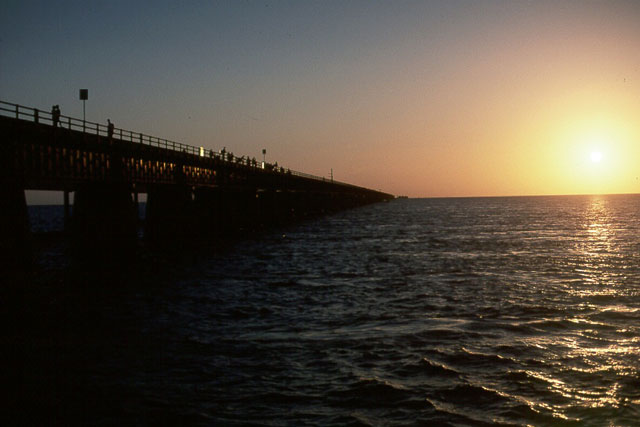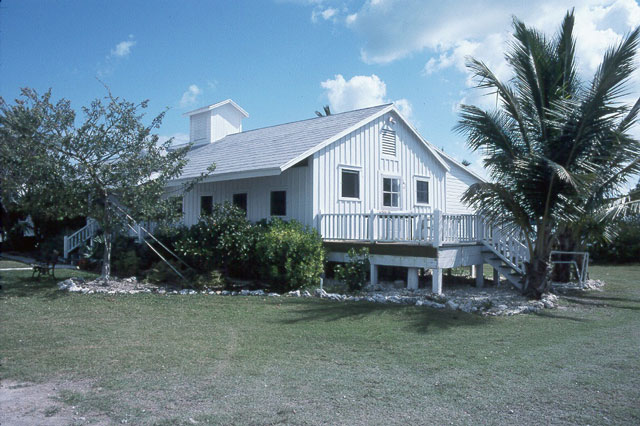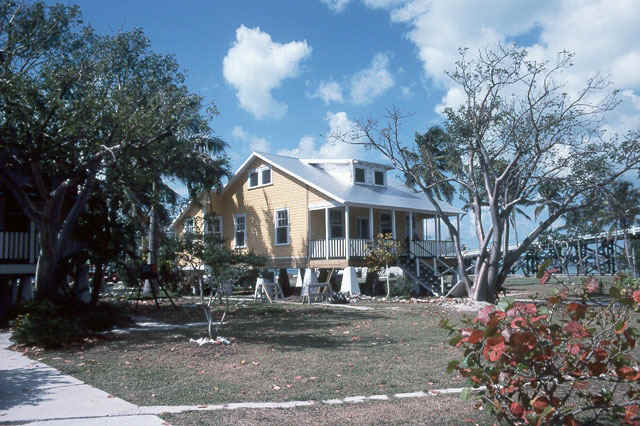Pigeon Key, Florida
In
1904, Henry Flagler announced he would build a railroad from Miami to Key
West. Critics scoffed. Engineers were aghast. His business partners wondered
if the old gentleman was quite sane. A determined Flagler would be the driving
force to accomplish the Key West extension, and Florida’s remote tropical
island paradise would never be the same.
Henry
Morrison Flagler was born in Hopewell, NY in 1830. His humble upbringing would
be in stark contrast to his later life as one of the wealthiest men in turn of
the century America. In 1867 Flagler had the good fortune to become a partner
with John D. Rockefeller. Out of their business relationship grew the monopoly
known as the Standard Oil Company. By the time he was 50 years old, Flagler
had amassed a huge fortune.
Florida
had interested Flagler since the winter of 1876-77 when he and his sickly wife
had traveled there for her health. Flagler was intrigued by the possibilities
of real estate and tourism development for his fellow wealthy friends and
business associates, trying to escape the harsh elements of the winter.
Flagler remarried in 1883 after his first wife had died, and again, Florida
was on his mind. The Flaglers honeymooned in St. Augustine. Flagler was
impressed by the charm of the old city, but dismayed at the lack of amenities
in first class hotels, and the rudimentary railroad facilities in the state.
In 1888, Flagler opened the posh Ponce de Leon hotel. Needing a suitable
railroad to get his guests there, he acquired the St. Augustine & Halifax
Railroad. Soon the railroad was renamed the Florida East Coast, and
Flagler’s grand development scheme for the Gold Coast of Florida was put
into action. Each year the railroad was extended further south until in 1896,
he had reached Miami.
Still
Flagler was not finished. Whatever the motivation for the Key West extension,
commerce, (especially Cuba), tourism, real estate, or other, Flagler was
determined that it would be built. For several years, surveys and planning had
been in the works. Two years alone were spent trying to determine a feasible
route through the Everglades south of Miami. In 1904 Flagler employed a young
engineer named J. C. Meredith. This man was an expert in the relatively new
construction methods and material of reinforced concrete. While consulting
with his general manager, Joseph Parrott, Flagler asked if the railroad could
be built. Assurred that it was possible, Flagler replied, “Very well then.
Go to Key West”. From that point on, construction started in earnest. The
race to build a railroad across the Keys was on, hopping from one island to
the next. Devising ingenious methods of building across the Everglades,
Flagler’s engineers were soon bridging the narrow gaps across the shallow
waters of the upper and middle Keys, building causeways and viaducts of
reinforced concrete.

The
sun is setting in the west in this view of the Seven Mile Bridge from Knights
Key, Fl.
April
3, 2001. John C. Dahl, photo.
Starting
in 1908, work commenced on a major hurdle known as the Seven Mile Bridge. From
Marathon to Little Duck Key, 546 concrete piers would be needed to bridge the
gap, the longest stretch of open water on the route. Pigeon Key is located
about midway across the Seven Mile Bridge, and this tiny coral island would
serve as a base camp for the construction. As many as 400 workers would be
housed on the island during the construction, which went on for almost four
years. Working conditions were atrocious, and many men were lost during the
1906 hurricane which struck Long Key. Mosquitoes were a major problem in the
mangrove swamps of the Keys. All fresh water had to be transported in from the
mainland, even that to be used for mixing the concrete. Old photos show tank
trains of large cypress wood casks loaded on flatcars being sent out as
construction edged further west. Costs mounted, but Henry Flagler, now in his
late 70’s did not waver. At last the magnificent engineering feat was
completed. On January 22, 1912 Flagler’s private car, Rambler, left Miami
with the old tycoon and other dignitaries in tow. The Overseas Railroad was a
reality! Less than two years later, Henry Flagler died at his palatial home in
Palm Beach, Florida.

The
Section Gang quarters building. Pigeon Key, Fl.
April
6, 2001 John C. Dahl, photo.
The
railroad offered a magnificent way to arrive in Key West. The several miles of
open water vistas were impressive. It was billed as the “Railroad that goes
to Sea”. But the Key West extension never was a financial success, and in
1935 the railroad did battle one last time with Mother Nature. The September 2
hurricane sounded the death knell for the line. Damage was extensive in the
Islamorada area. Wind speeds of 200 mph and a 17 foot tidal wave destroyed
miles of track and washed out several of the long fills. Although it could
have been repaired for relatively few dollars, 1935 was deep in the
Depression, and the FEC’s managers decided to abandon the route. Flagler’s
Folly as it was called during early years of construction, had seen its day.

Bridge
Tender's home, Pigeon Key, Fl. Painted in authentic Florida East Coast
"Flagler Yellow", this structure dates to 1912.
April
6, 2001 John C. Dahl, photo.
Today
Pigeon Key and a few of the original structures used as the base camp and
later for bridge maintenance survives as a museum, dedicated to the builders
of the Key West Extension of the Florida East Coast. Maps, historic photos,
models and a wonderful picture postcard collection of the Key West Extension
can be found in the museum. It is reached by an intact section of the original
bridge off of Knights Key, which now serves as a biking, / hiking, and fishing
pier. Most of the original Seven Mile Bridge is still in existence. The
abandoned railroad right of way was converted to form the base for the
Overseas Highway to Key West. Later, a new highway bridge across the Seven
Mile gap was built adjacent to the old railroad bridge. Late last winter, I
had the opportunity to drive across the Keys, enjoying the Florida sunshine
and scenic vistas from the new Seven Mile highway bridge. Just to the north is
the old railroad bridge, it’s concrete viaducts and heavy girder decks still
intact. I could only marvel at the feat of railroad engineering accomplished
by Henry Flagler and his dedicated men and women of the Florida East Coast
Railway.